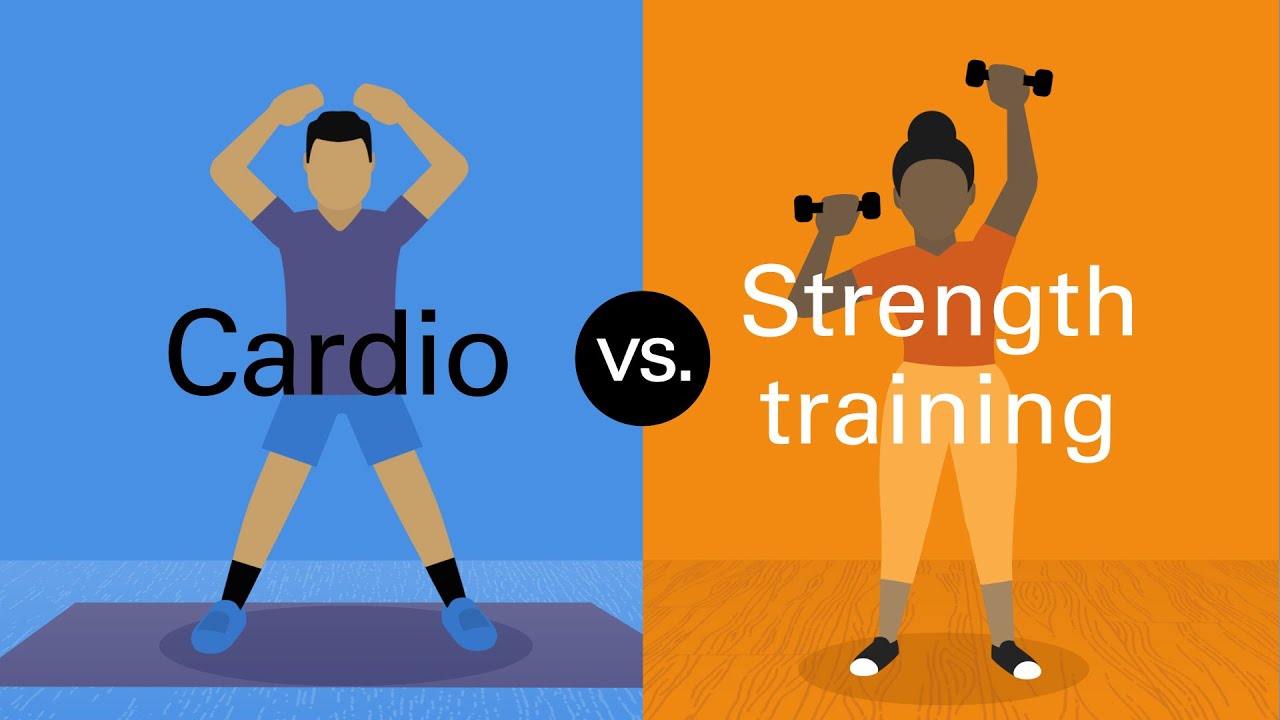In today’s fast-paced world, where sedentary jobs and screen time dominate daily life, regular physical activity is more essential than ever. But one of the most common questions Americans ask is: “How often should I exercise to stay healthy?”
According to official U.S. Physical Activity Guidelines, developed by the Department of Health and Human Services (HHS), the ideal amount of exercise depends on age, health status, and fitness goals. This article explores in depth how often you should exercise, the types of exercise recommended, and scientific insights into how consistent movement supports both body and mind.
Understanding the U.S. Exercise Guidelines
The Physical Activity Guidelines for Americans (2nd Edition) — updated by the U.S. Department of Health and Human Services in 2018 — outlines how much and what kind of physical activity Americans need to maintain or improve their health.
The recommendations are based on extensive research from universities and public health organizations, including the Centers for Disease Control and Prevention (CDC) and the American College of Sports Medicine (ACSM).
Summary of Recommended Exercise by Age Group
| Age Group | Aerobic Activity | Strength Training | Flexibility / Balance |
|---|---|---|---|
| Children (6–17 years) | ≥60 minutes daily (moderate-to-vigorous) | 3+ days/week (muscle & bone strengthening) | Integrated in play and sports |
| Adults (18–64 years) | 150–300 minutes/week (moderate) OR 75–150 minutes/week (vigorous) | 2+ days/week (major muscle groups) | Recommended for posture and injury prevention |
| Older Adults (65+) | Same as adults, as tolerated | 2+ days/week | Emphasis on balance and flexibility |
| Pregnant/Postpartum Women | 150 minutes/week (moderate) | As approved by healthcare provider | Gentle stretching, yoga, walking |
(Source: U.S. Department of Health and Human Services, Physical Activity Guidelines, 2018)
How Often Should You Exercise Each Week?
1. For General Health
The minimum effective dose for maintaining health is 30 minutes of moderate exercise, five times a week — or roughly 150 minutes total per week.
This can include:
- Brisk walking
- Cycling on flat terrain
- Water aerobics
- Dancing
- Gardening or yard work
You can also split it into shorter 10–15 minute sessions throughout the day — research from Duke University Medical Center confirms that even short bouts of exercise provide measurable cardiovascular benefits.
2. For Weight Loss or Improved Fitness
If your goal is weight management or endurance, aim for 300 minutes (5 hours) of moderate exercise per week, or 150 minutes of vigorous exercise (like running or HIIT).
Examples of vigorous activity:
- Jogging or running
- Fast cycling or uphill rides
- Competitive sports (soccer, basketball, tennis)
- High-Intensity Interval Training (HIIT)
According to a Harvard T.H. Chan School of Public Health study, people who exercised for 45–60 minutes per day had a significantly lower risk of weight regain compared to those who did less than 30 minutes daily.
3. For Strength and Muscle Tone
Strength training should be performed at least two non-consecutive days per week. Each session should target all major muscle groups — arms, chest, back, legs, shoulders, and core.
Effective strength workouts include:
- Bodyweight exercises (push-ups, planks, squats)
- Resistance band training
- Free weights or machines
- Functional fitness (like CrossFit or kettlebell training)
A 2021 study from the University of Michigan found that consistent strength training not only increases muscle mass but also improves longevity, linking muscular strength to reduced risk of premature death.
4. For Mental Health
Exercise frequency doesn’t just affect the body — it’s crucial for the mind.
A Yale University and Oxford University joint study found that people who exercised 3–5 times per week reported 40% fewer days of poor mental health compared to those who didn’t. Activities like walking, yoga, or cycling are especially beneficial for reducing anxiety and depression symptoms.
Best mental-health-boosting exercises:
- Walking or hiking outdoors
- Yoga or Pilates
- Swimming
- Tai Chi
- Low-intensity cycling
What Counts as “Moderate” or “Vigorous” Activity?
To make it easy, here’s a table showing examples of activities by intensity:
| Intensity | Description | Examples | Physical Signs |
|---|---|---|---|
| Light | Gentle effort, easy to maintain | Slow walking, stretching, household chores | Can talk and sing easily |
| Moderate | Raises heart rate slightly | Brisk walking, dancing, casual cycling | Can talk, not sing |
| Vigorous | Substantial effort, increases breathing | Running, aerobics, jump rope, fast swimming | Can speak only a few words at a time |
Tip: Use the “Talk Test” — if you can talk but not sing, you’re in the moderate zone; if you can barely talk, it’s vigorous intensity.
How to Distribute Exercise Throughout the Week
You don’t have to cram workouts into weekends. The U.S. guidelines emphasize consistency over intensity.
Here are several weekly breakdown examples to suit different lifestyles:
| Goal | Schedule Example | Focus |
|---|---|---|
| Beginner | 30 min brisk walk × 5 days/week | Build habit and endurance |
| Weight Loss | 45 min cardio × 5 days/week + 2 strength days | Increase calorie burn |
| Muscle Gain | 3–4 strength days + 2 light cardio | Progressive overload |
| Busy Schedule | 20 min HIIT × 3 days/week + weekend hike | Time-efficient |
| Older Adults | 30 min walk × 5 days/week + 2 balance/yoga days | Mobility and joint health |
The Science of Exercise Frequency: Why Consistency Matters
1. Cardiovascular Health
Research from Stanford University’s School of Medicine found that people who exercise regularly — at least 3–4 times per week — improve arterial elasticity and blood circulation, reducing heart disease risk by up to 35%.
2. Metabolic Benefits
A University of Missouri study revealed that sitting for long periods without movement significantly impairs insulin sensitivity, but even short activity breaks every 30 minutes can restore metabolic health.
3. Cognitive Function
A meta-analysis from the University of British Columbia demonstrated that regular aerobic exercise increases the size of the hippocampus, the brain area involved in memory and learning.
4. Longevity
According to Harvard’s Nurses’ Health Study, adults who exercised 5–6 hours weekly lived an average of 3.4 years longer than sedentary individuals.
How Much Is Too Much Exercise?
While exercise is crucial for health, overtraining can have negative effects.
Signs you’re overdoing it:
- Constant fatigue
- Persistent muscle soreness
- Trouble sleeping
- Decreased performance or motivation
- Mood changes (irritability, anxiety)
Experts recommend at least one full rest day per week, and alternating between intense and light workout days.
A 2022 study from the University of Copenhagen showed that rest days help restore muscle glycogen, improving recovery and long-term performance.
How to Stay Consistent with Your Exercise Routine
Consistency is key — not perfection. Here are actionable tips for staying on track:
1. Set SMART Goals
Specific, Measurable, Achievable, Relevant, and Time-bound goals help create structure and motivation.
Example: “I’ll walk 30 minutes every morning before breakfast, five days a week.”
2. Track Progress
Use fitness apps or a journal to log workouts. Seeing progress over time boosts motivation.
3. Mix It Up
Variety prevents boredom and overuse injuries. Alternate between cardio, strength, flexibility, and recreational activities.
4. Find an Accountability Partner
Exercising with a friend increases consistency. Social support has been shown in studies (like one from Michigan State University) to improve exercise adherence rates.
5. Listen to Your Body
Rest when needed. Recovery is part of progress.
Sample Weekly Exercise Plan (Based on U.S. Guidelines)
| Day | Activity Type | Duration | Intensity |
|---|---|---|---|
| Monday | Brisk walk + stretching | 30 min | Moderate |
| Tuesday | Strength training (full body) | 45 min | Moderate |
| Wednesday | Yoga or cycling | 30 min | Moderate |
| Thursday | Strength training (upper body) | 45 min | Vigorous |
| Friday | Walking or swimming | 30 min | Moderate |
| Saturday | Hiking or HIIT | 45 min | Vigorous |
| Sunday | Rest or gentle yoga | – | Light |
FAQs: How Often Should You Exercise According to U.S. Guidelines
Q: Is 3 days of exercise per week enough?
A: Yes, if sessions are at least 30–45 minutes of moderate to vigorous intensity. It meets the minimum for cardiovascular health, though more frequent exercise offers greater benefits.
Q: Can I split workouts into shorter sessions?
A: Absolutely. The CDC confirms that three 10-minute sessions have similar benefits as one 30-minute session.
Q: How much exercise is too much?
A: More than 90 minutes of intense exercise daily without recovery may lead to overtraining. Always schedule rest days.
Q: What if I miss a week?
A: Missing a week doesn’t erase your progress. Resume gradually; consistency over months matters more than perfection weekly.
Q: How does exercise differ for seniors?
A: Older adults should prioritize balance, flexibility, and low-impact cardio to prevent falls and maintain independence.
Q: Does walking count as exercise?
A: Yes! Brisk walking is one of the most effective, low-risk exercises and meets U.S. aerobic guidelines when done regularly.
Q: Are home workouts effective?
A: Definitely. Bodyweight exercises, resistance bands, and online guided workouts can achieve similar benefits to gym training if done consistently.



